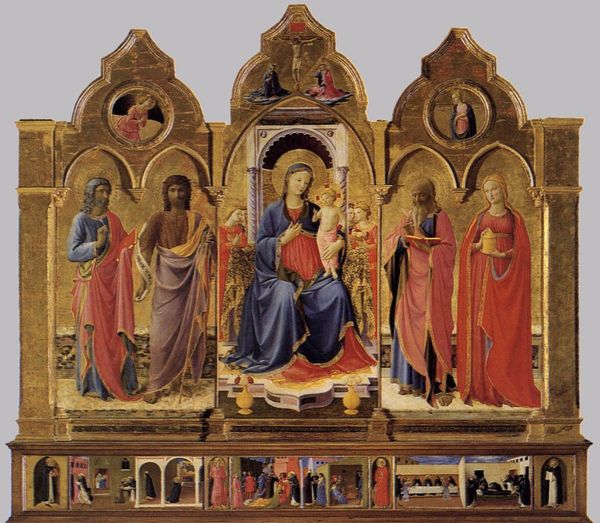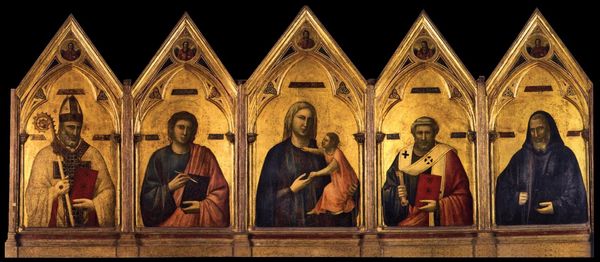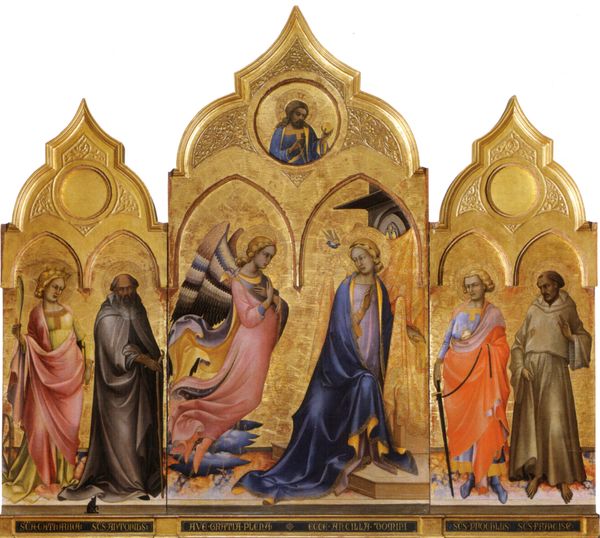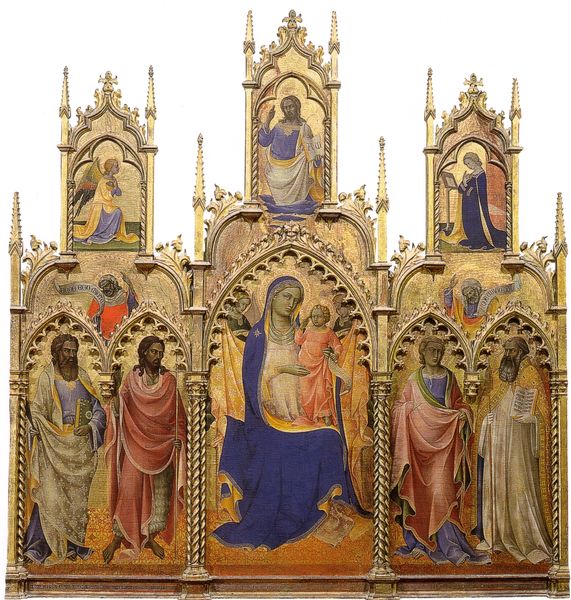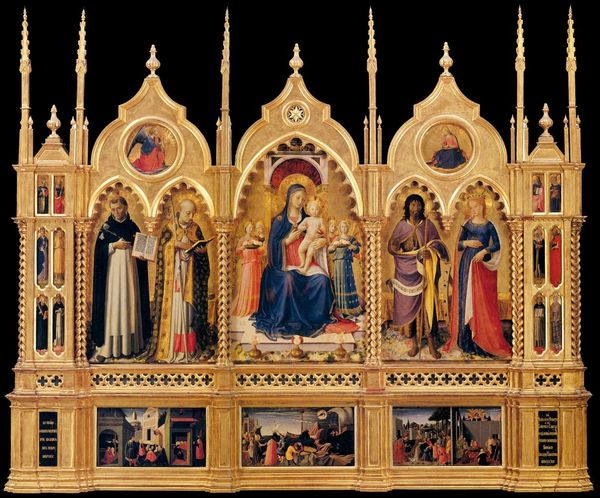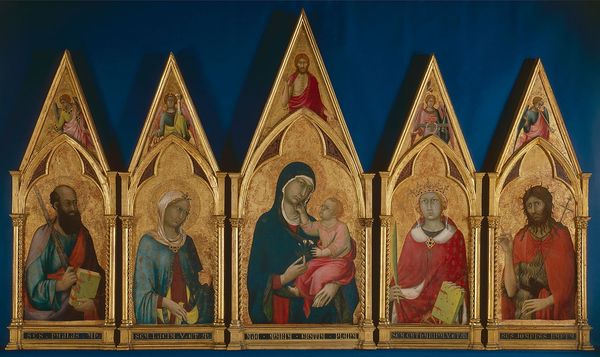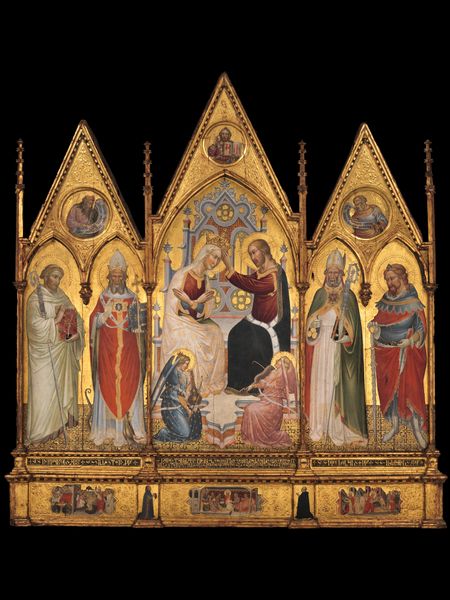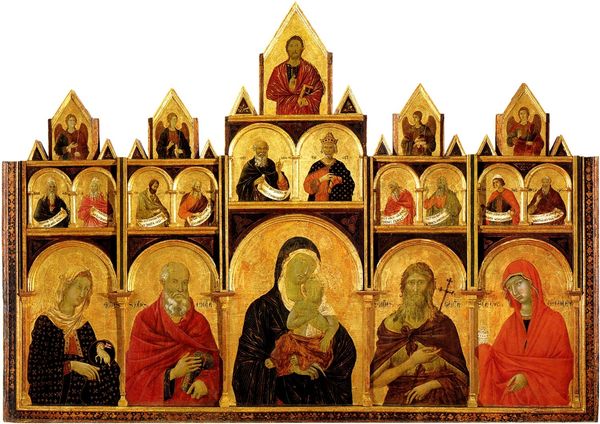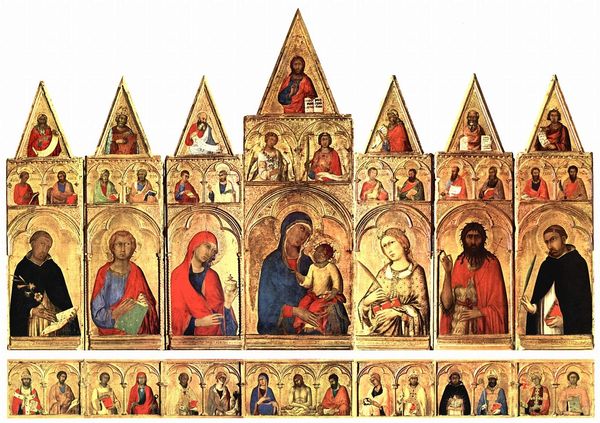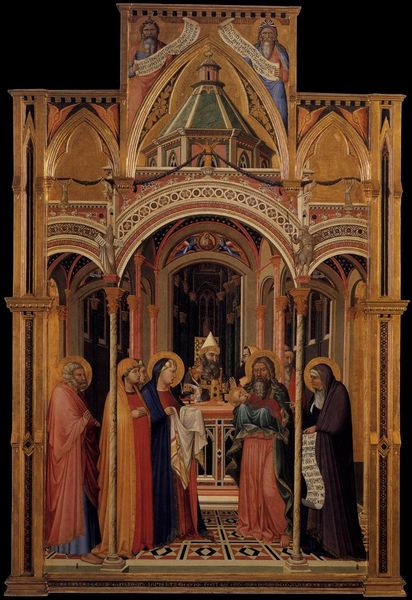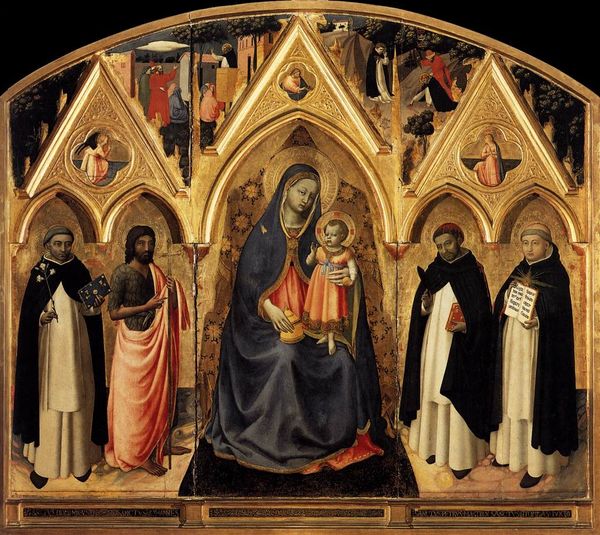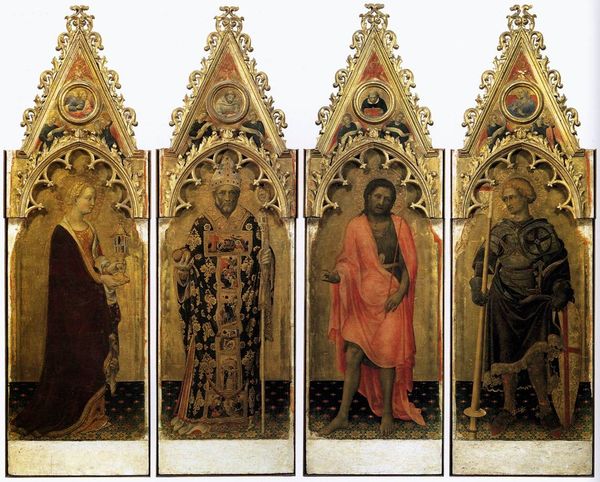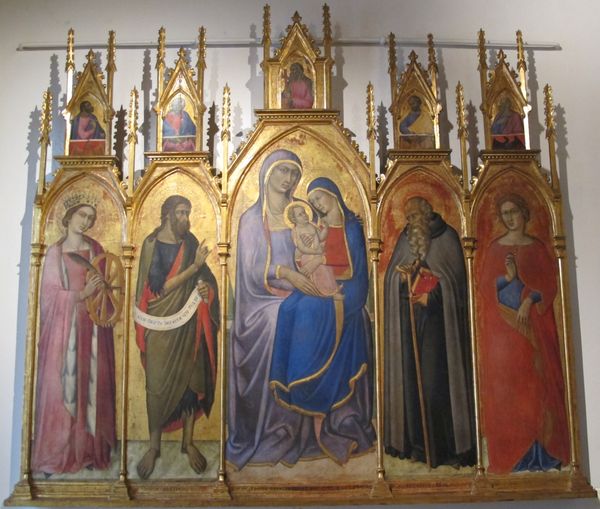
panel, tempera, painting
#
portrait
#
medieval
#
panel
#
allegory
#
tempera
#
painting
#
sculpture
#
figuration
#
historic architecture
#
christianity
#
history-painting
#
academic-art
#
italian-renaissance
#
early-renaissance
#
christ
Dimensions: 91 x 340 cm
Copyright: Public domain
Editor: So, this tempera on panel, "Polyptych," dates back to 1335 and is by Giotto. It's this beautiful, elaborate altarpiece. I’m struck by the formality and the religious symbolism; it really speaks to a different worldview than our own. What's your take? How do you interpret this work? Curator: From a historical perspective, the “Polyptych” tells us a lot about the patronage system and the public function of art in the 14th century. These weren’t personal expressions, but commissions often dictated by religious institutions or wealthy families. The gold leaf, the hierarchical scaling – notice how the Virgin is centrally placed and larger? – all signaled power and status to a largely illiterate public. Consider how this image reinforced societal values and religious doctrine. What do you think was the relationship between art and social control at this time? Editor: That’s fascinating. I hadn't really considered the idea of “social control” so directly. It feels a bit cynical. I saw the gold leaf and the Virgin’s position more as signs of reverence and devotion. Was it really *all* about power? Curator: It’s a complex relationship. Certainly, there was genuine belief, but the Church also strategically employed art to shape public opinion and reinforce its authority. Art became a visual tool in religious theater. Also consider where this polyptych might have originally been displayed. Its location significantly dictated its role in religious life. Editor: That’s such a good point. Thinking about its original location helps me see the intention differently. Curator: Exactly! Understanding the socio-political context is crucial to deconstructing the meaning and reception of a work like this. We move past purely aesthetic appreciation and begin to consider its function as a cultural artifact. Editor: This was a good perspective, thank you! I think looking at art as having different intentions depending on who is sponsoring or creating it makes so much more sense. Curator: I think we both learned a bit more looking at how imagery plays a role in history!
Comments
No comments
Be the first to comment and join the conversation on the ultimate creative platform.
